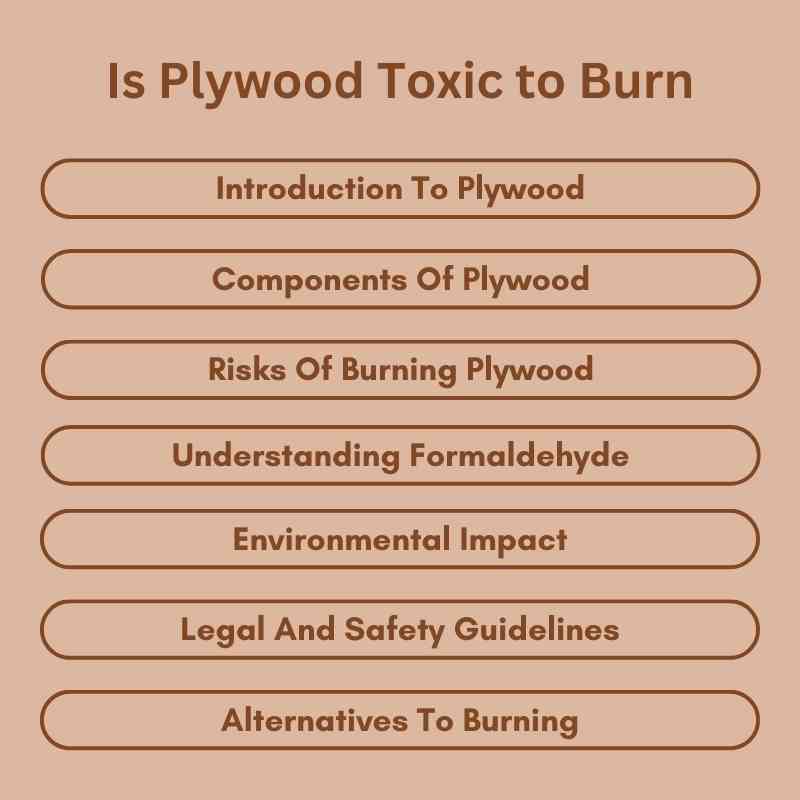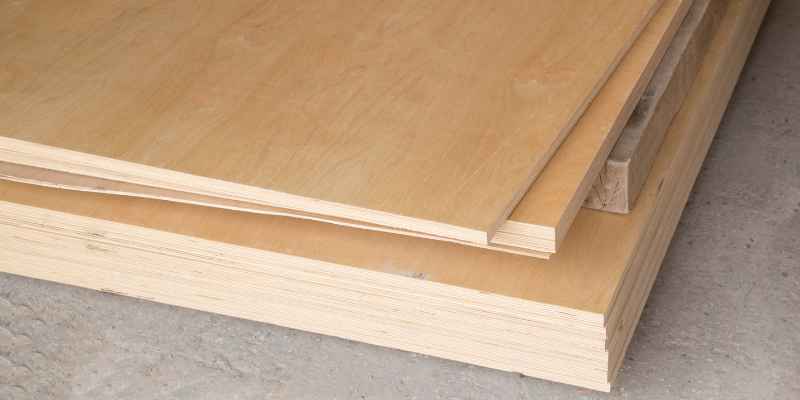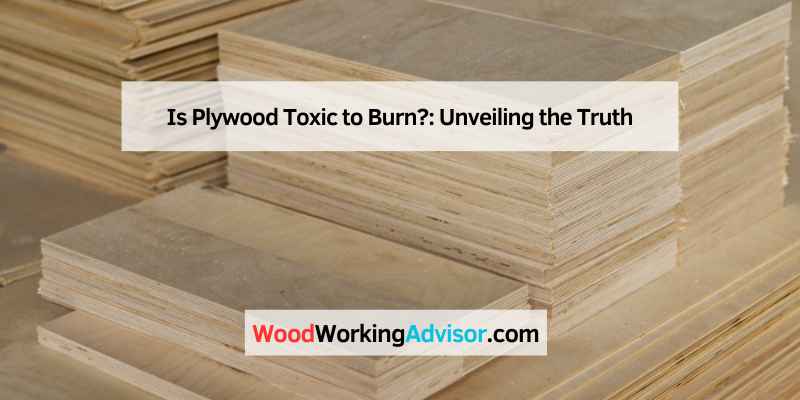Plywood can be toxic to burn. It often contains adhesives and chemicals that release harmful fumes when ignited.
Plywood is a popular building material used in construction and furniture making. While its versatility and durability make it appealing, burning plywood poses health risks. Many plywood types contain formaldehyde and other volatile organic compounds (VOCs) due to their adhesives and finishes.
These substances can release toxic gases when burned, which may harm both human health and the environment. Understanding the dangers of burning plywood is essential, especially for those looking for safe alternatives for disposal. By exploring safer options, individuals can protect themselves and the environment from potentially harmful effects. Educating yourself on this topic can lead to more responsible choices in waste management.
Introduction To Plywood
Plywood is a type of engineered wood made from thin layers of wood veneer. These layers are glued together to create a strong and stable material. It is popular for its durability and versatility.
Common uses of plywood include furniture, flooring, and cabinetry. Builders often use it for walls and roofs. It is also found in boats and vehicles.
While plywood is useful, burning it can release harmful chemicals. These chemicals can come from the adhesives and finishes used in production. Always check the type of plywood before considering burning it.

Components Of Plywood
Plywood is made of multiple layers. Each layer is called a veneer. These veneers are glued together. The glue used in plywood can contain harmful substances.
Common chemicals found in plywood include:
| Chemical | Effect |
|---|---|
| Formaldehyde | Can cause irritation and health issues. |
| Phenol | May harm the skin and lungs. |
| Urea | Can lead to allergies and other problems. |
Burning plywood releases toxic fumes. These fumes can be harmful to health. It is best to avoid burning plywood.
Risks Of Burning Plywood
Burning plywood can release toxic emissions. These emissions include formaldehyde and other harmful chemicals. Inhaling these fumes can lead to serious health issues.
The health hazards of burning plywood are significant. Exposure can cause respiratory problems and skin irritation. Long-term exposure may increase the risk of cancer.
Always ensure proper ventilation when burning any type of wood. Consider using alternative materials that are safer for burning. Protecting your health is very important.
Understanding Formaldehyde
Formaldehyde is a common chemical found in plywood. It helps to bond wood pieces together. This chemical can release harmful gases when heated or burned. Burning plywood can release toxic fumes into the air.
Breathing in formaldehyde can cause health problems. Short-term exposure may lead to eye and throat irritation. Long-term exposure can result in serious issues like respiratory problems and cancer.
| Effects of Formaldehyde Exposure | Symptoms |
|---|---|
| Short-term | Eye irritation, throat irritation, coughing |
| Long-term | Respiratory issues, increased cancer risk |
Environmental Impact
Burning plywood can lead to serious air pollution. The chemicals in plywood release toxic fumes. These fumes can harm both human health and the environment.
Smoke from burning plywood contains particulate matter. This can cause respiratory issues and other health problems. Communities near burning sites may face increased health risks.
Wildlife is also affected by burning plywood. Toxins from the smoke can contaminate water and soil. Animals may suffer from illness or even die due to this pollution.
Protecting the environment means reducing plywood burning. Finding safer alternatives for disposal is crucial. Keeping air and wildlife safe is a shared responsibility.
Legal And Safety Guidelines
Burning plywood can release harmful chemicals. Many plywood products contain glues and resins that produce toxic fumes. These fumes can be dangerous to breathe. Some countries have strict regulations about burning plywood.
Before burning plywood, check local laws. Many areas require permits for burning materials. Some places ban burning plywood altogether. Always follow local fire safety rules.
| Disposal Method | Description |
|---|---|
| Recycling | Plywood can be recycled into new products. |
| Landfill | Dispose of plywood in a designated landfill. |
| Donation | Give usable plywood to local charities or schools. |
Alternatives To Burning
Recycling plywood is a great choice for eco-friendly disposal. Many recycling centers accept plywood. They can process it into new products. This helps reduce waste and saves trees.
Consider these eco-friendly disposal options:
- Donate usable plywood to local schools or community projects.
- Use it for craft projects at home or in schools.
- Check with local construction companies for recycling programs.
- Find out if your area has a wood waste collection service.
Choosing these methods helps protect the environment. It also keeps harmful fumes from burning out of the air.

Frequently Asked Questions
Is Burning Plywood Safe For The Environment?
Burning plywood can release harmful chemicals into the air. Many plywood products contain formaldehyde and other additives. When burned, these chemicals can create toxic fumes, contributing to air pollution. It’s essential to dispose of plywood properly instead of burning it.
Consider recycling or using eco-friendly alternatives.
What Chemicals Are Released When Burning Plywood?
When plywood burns, it releases various toxic chemicals. These include formaldehyde, volatile organic compounds, and dioxins. These substances can pose health risks if inhaled. Additionally, the smoke can irritate the respiratory system. Always prioritize safe disposal methods to minimize exposure to these harmful chemicals.
Can Burning Plywood Cause Health Issues?
Yes, burning plywood can lead to serious health concerns. Inhaling the toxic fumes can cause respiratory problems and allergic reactions. Long-term exposure may increase the risk of chronic illnesses. It’s crucial to avoid burning treated plywood for personal safety. Seek safer alternatives for disposal.
What Is The Best Way To Dispose Of Plywood?
The best disposal method for plywood is recycling. Many recycling centers accept plywood, turning it into new products. If recycling isn’t an option, consider donating usable pieces. Always avoid burning plywood to prevent environmental pollution and health risks. Responsible disposal helps protect our health and the planet.
Conclusion
Burning plywood can release harmful toxins into the air. These emissions can pose health risks and environmental concerns. It’s essential to understand the materials used in plywood before deciding to burn it. Opt for safer alternatives to protect your health and the environment.
Always prioritize safe disposal methods for unwanted materials.

